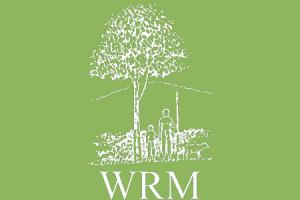For many years now the indigenous Mbya Guarani communities from the villages of Tekoa Yma and Capii Yvaté (Pepiri Guazu) have been inhabiting lands located at El Soberbio, in the Municipality of San Pedro, Province of Misiones, where the Uruguay river descends the Mocona falls.
Argentina
Bulletin articles
14 May 2002
Bulletin articles
20 February 2002
In December 1999, Provincial Law No. 3,631 was sanctioned in Argentina, creating the Overall Conservation and Sustainable Development Area, known as the “Green Corridor of the Province of Misiones.” It involves 22 municipalities and covers an area of 1.108,000 hectares of Parana forest, located in the province of Misiones, spanning a mosaic of landscapes including protected areas, private property put to various uses, agricultural settlements, indigenous communities and varied socio-economic situations and even areas having land use and land tenure conflicts.
Bulletin articles
27 November 2001
In February last year, “Río Foyel S.A.” a company set up in March 1999 and recent owner of a 7,800 hectare plot located in the zone of El Foyel, in the southern province of Rio Negro, submitted a project for the logging of four thousand hectares of ñire native forest and then reforestation of the zone with exotic Oregon and Radiata pine and the “sustainable” management of over 1,800 hectares of native species (see WRM Bulletin 38, September 2000).
Bulletin articles
11 August 2001
The story of the Hoktek T’oi community of the indigenous Wichí people in the Province of Salta (in the north of Argentina) is a story of suffering caused by state policies linked to economic interests. Over the past years, far from finding a solution to end a hundred years of usurpation and injustice, the authorities have only continued to attack the rights and the very existence of the Wichí people, who protected the tropical forest where they have always lived.
Bulletin articles
12 April 2001
In Argentina, the invasion of tree monocultures is destroying the country's grassland-related biodiversity. Subsidised by the government with backing from the World Bank, plantations are expanding in the eastern Provinces of Misiones, Corrientes and Entre Rios, while significant areas are also being planted in the Provinces of Buenos Aires, Córdoba, Cuyo, Chaco and Patagonia. According to unofficial figures, the plantation area in Argentina has increased five fold from 1995 to 2000, and continues growing.
Bulletin articles
12 March 2001
With an area of 2,791,810 square kilometres, Argentina is the second largest country in South America. Due to its extension in latitude --from 22 to 56 º SL-- its territory encompasses a variety of climates, landscapes, flora and fauna. Argentina is included in the group of the 25 most biodiverse countries in the world in terms of sheer numbers of species present. The several types of native forests to be found in that country are strongly linked to such biodiversity levels. Nevertheless, they have been disappearing at an alarming rate.
Bulletin articles
13 December 2000
In the last issue of the WRM bulletin we included an article --"Argentina: A shady carbon sink project"-- detailing an absurd and destructive tree plantation project in that country. Now we are pleased to inform you that the struggle against it has been successful. The Argentinian justice has prohibited the company to "carry out all the works related to the forestry project", which involved the clearcutting of 4400 hectares of native forest to be substituted with Oregon pine.
Bulletin articles
16 November 2000
While government representatives were discussing at the Hague the supposed benefits of including forests and plantations in the so-called Clean Development Mechanism of the Kyoto Protocol of the Climate Change Convention, an unusual project in Argentina was giving reason to those opposing such inclusion.
Bulletin articles
17 September 2000
Coinciding with the conquest of the vast territory of Argentina by the Buenos Aires centralized government, started in the second half of the 19th century in the name of modernization, forests in different regions of the country entered a period of decline which has continued until present times. The two cases mentioned below are only examples of a process happening throughout the country.
Bulletin articles
17 July 2000
Northern Santiago del Estero Province is mostly inhabited by people of mixed Quichua and Spanish descent. During the 19th century the province -as well as the whole region of the Great Chaco- suffered the environmental destruction provoked by powerful European logging companies, which used peasants as workers under a near-slavery system. After the region was almost completely deforested and logging was no longer profitable, foreign companies left the country leaving a landscape of devastation and poverty behind.
Other information
18 June 2000
Following an existing trend at the global level, oil companies in Argentina have enthusiastically embraced the idea of entering the carbon permits market, as an effective way to increase their profits and revamp their image to the eyes of public opinion: from the bad guys responsible for global warming to champions of forest conservation!
Bulletin articles
20 January 2000
The issue of the environmental services that Southern countries can provide to Northern countries to mitigate the effects of global climate change is controversial. On the one hand there is the question of environmental justice at the global level, since those countries that are most responsible for the dangerous alteration of climate on Earth, instead of addressing the causes that are provoking it -for instance the unsustainable energy use and the huge emissions of CO2 by industry- are looking for doubtful and partial solutions, that can be bought for a low price in the South.
